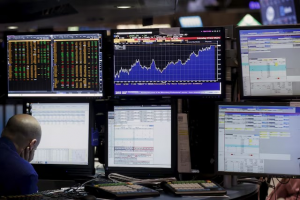The U.S. dollar held firm on Wednesday before the Federal Reserve policy meeting later in the session which is expected to deliver a so-called hawkish cut, trimming rates but suggesting fewer cuts may lie ahead.
Focus will fall on how much further Fed officials think they will reduce rates next year, while markets have been fully priced in a 25 basis points cut for weeks. Analysts recalled that the assumption that the Fed would reduce its level of 2025 easing had propped up the dollar recently.
"We foresee a hawkish shift in the dot plot, consistent with the movement in market expectations since the last update in September," said David Doyle, head of economics at Macquarie.
"Chair Powell is likely to stress a slower pace of easing ahead, uncertainty over the neutral rate, and the data dependence of the policy outlook," he argued, adding that beyond this meeting, he sees just one 25 bps cut in 2025.
The U.S. dollar index, which measures the greenback against six rivals, was up 0.05% at 106.98 after hitting its highest since Nov. 26 at 107.18 on Monday.
"We think they will pause (cutting rates in January)," said Padhraic Garvey, regional head of research, Americas at ING.
"It's unlikely they telegraph that intention explicitly."
Data on Tuesday yet again showed a resilient U.S. economy after retail sales beat expectations, but investors are also weighing the possible impact of promised tariffs and tax cuts by the incoming Trump administration.
"We might find the dollar weakens if they 'only' revise (interest rate forecasts) down to two cuts in 2025," said Matt Simpson, a senior market analyst at City Index.
The current dot plot projects the Fed to deliver four 25 bp cuts next year.
More upbeat economic news out of the U.S. amid dour expectations for Chinese economic growth sent the Aussie and kiwi down. China is Australia's largest two-way trading partner.
The Australian dollar slid to $0.6310, its lowest since October 2023. It was last down 0.35% at $0.6313.
The kiwi touched a fresh two-year low of $0.5731.
The offshore yuan traded at 7.2905 per dollar on Tuesday, holding steady near a 13-month low against the dollar.
Against the yen, the greenback was down 0.07% at 152.16, having given up some of its recent gains in the previous session as U.S. Treasury yields fell. [US/]
Markets have significantly reduced bets that the Bank of Japan will raise rates on Thursday in favour of a January hike, following a slew of media reports indicating the central bank may take a cautious stance.
"If the BOJ eschew a rate hike, as expected, then (BOJ Governor Kazuo) Ueda will still telegraph rate hikes down the line. This will help support the yen but is likely not far from the truth," said Kieran Williams, head of Asia FX at InTouch Capital Markets.
Japan's exports rose for a second straight month in November, data showed on Wednesday.
"The BoJ's relative lack of urgency around the timing of its next hike may also be attributed to the current forex backdrop," said Izumi Devalier, Japan and Asia Economist at BofA Japan.
"The BoJ's decision to hike in July was in part due to concerns over a sharp weakening of the yen and resurgence in upside inflation risks."
The Bank of England is also expected to hold rates steady on Thursday. Sterling dropped versus the euro and the dollar after British inflation hit 8-month highs.
It was down 0.19% to $1.2687 while the single currency rose 0.2% to 82.70 pence per euro .
The euro sat at $1.0495.
Among other central banks meeting this week, Sweden's Riksbank is widely expected to cut rates by as much as half a point, while the Norges Bank is set to leave rates unchanged.
In cryptocurrencies, bitcoin was last down 2.3% to $103,959 after hitting a high of $108,379.28 in the previous session.













